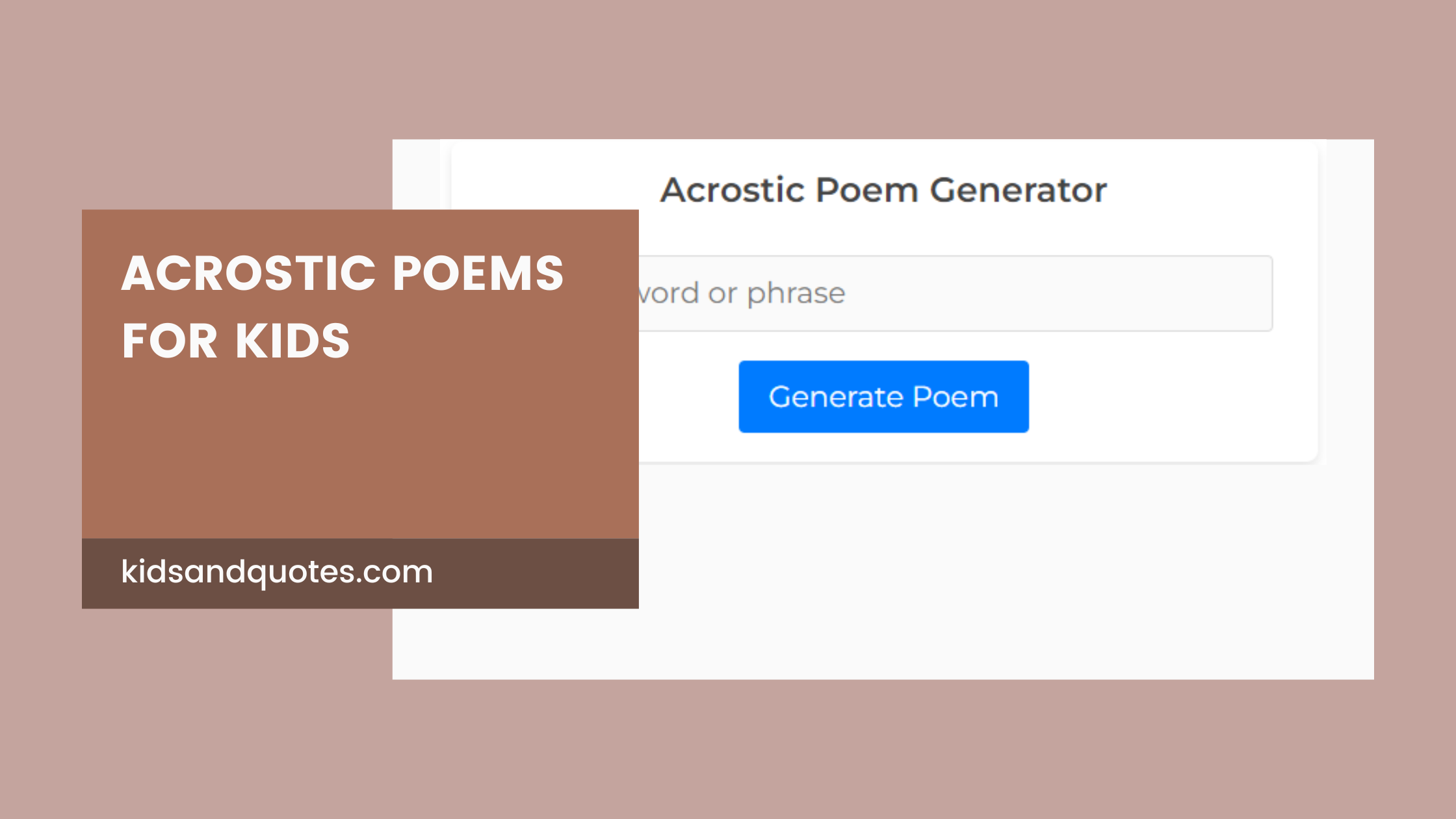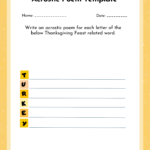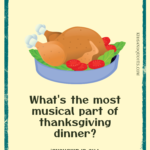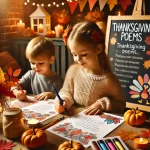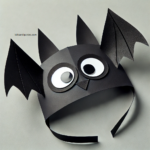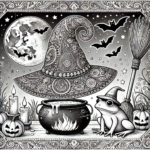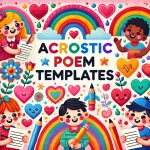Hey there, parents and teachers! As a teacher with over a decade of experience, I’ve seen the magical effect of acrostic poems in classroom . They’re not just fun wordplay – they’re powerful tools for boosting vocabulary, creativity, and critical thinking skills in young learners.
In this blogpost, we’ll delve into why acrostic poems are so effective for children, explore a step-by-step approach to crafting them, and brainstorm a plethora of exciting ideas to ignite your students’ imaginations.
Above all, don’t forget to try our ‘Free AI-powered Acrostic Poem Generator for kids’ at the end of this blogpost – a fun way for teachers and parents to help students at school learn the nuances of ‘Acrostic Poems’ through coding and technology.
- Related: 6 Must-read kindness poems for kids
What makes acrostic poems so special for young learners?
Vocabulary and language skills
I’ve seen acrostic poems work wonders for expanding vocabulary. Kids get to play with words, discovering new ones and figuring out how to fit them into those lines. It’s like a puzzle and a word game all rolled into one! They start thinking about synonyms, antonyms, and different ways to describe the same thing – all while having a blast.
Creativity and self-expression
Now, let’s talk creativity! Acrostic poems give kids the freedom to let their imaginations run wild. They get to choose the words, the tone, and even add their own artistic flair with drawings or doodles. It’s a fantastic way for them to express themselves and share their unique perspectives.
Spelling and phonics
Spelling and phonics get a boost too! When kids write acrostic poems, they’re not just putting letters together – they’re thinking about the sounds they make. They’re connecting those letters to words and building a foundation for strong reading and writing skills. It’s learning disguised as fun!
Critical thinking and problem solving
And get this – acrostic poems are a low-key workout for those critical thinking muscles! Kids have to think about how words fit together, what makes sense, and how to solve the “puzzle” of each line. They’re not just writing; they’re actively problem-solving, which sets them up for success in all kinds of learning.
Crafting awesome acrostic poems: A step-by-step guide
Choosing a word or theme
Alright, let’s kick things off! The first step is picking something fun to write about. It can be a favorite animal (think DOG), a special place (maybe BEACH), a beloved hobby (like DANCING), or even their own name. Brainstorm together and let those creative juices flow!
Writing the letters vertically
Now, grab a piece of paper or a whiteboard and write those letters of the chosen word or theme down the page, one letter per line. It’s like building a ladder of letters – the first letter at the top, and the last one at the bottom. This will be our poem’s backbone!
Brainstorming words or phrases for each letter
Now comes the fun part! Have your child think of words or phrases that describe their chosen word or theme, starting with each letter. Let those imaginations soar! If they’re stuck, rhyming words can be a helpful jumping-off point.
For example, if the word is “CAT,” they might come up with “Cuddly,” “Always purring,” and “Tiny paws.”
Crafting lines of poetry
Now it’s time to turn those brainstormed words or phrases into lines of poetry. Help your child weave their ideas together, adding details and making it sound catchy. They don’t have to rhyme, but a little rhyme can be extra fun! If they’re struggling, offer gentle suggestions and encourage them to experiment.
Adding illustrations or decorations
This is where the artistic flair comes in! Encourage your child to add illustrations or decorations that match their poem. They could draw pictures, add glitter, use colorful markers, or even cut out shapes from magazines. This makes the poem even more personal and engaging, turning it into a unique work of art. It’s also a great way to incorporate this activity into a fun classroom project!
Beyond the basics: Explore different types of acrostic poems

Double acrostics
A Double Acrostic poem is a type of poem in which both the first and last letters of each line form words or phrases when read vertically. This poetic structure adds an additional layer of complexity and creativity, as the poet must ensure that the content of each line contributes to both vertical messages.
Name poems
Name poems are a super fun way for kids to get to know themselves better. Each line starts with a letter from their name, and they describe themselves using words or phrases that match those letters. It’s a fantastic activity for back-to-school or anytime students need a confidence boost!
Shape poems
Let’s get visual! Shape poems are a playful twist, where the words are arranged to form the shape of the subject. Think of a poem about a tree shaped like a tree, or a poem about a star shaped like a star. It’s a creative challenge that doubles as a fun art project!
Sentence acrostics
Time to level up those writing skills! Instead of single words, each line in a sentence acrostic starts with a letter from the chosen word, forming a whole sentence. It takes a bit more brainstorming, but the results can be super creative and impressive.
Spark your child’s creativity
A variety of engaging prompts to inspire young poets
Nature themes
- Use an animal’s name (e.g., OWL, BUTTERFLY, BEAR)
- Describe a weather phenomenon (e.g., RAIN, SUNSHINE, SNOW)
- Focus on a plant (e.g., ROSE, TREE, DANDELION)
Holidays and seasons
- Celebrate a holiday (e.g., CHRISTMAS, HALLOWEEN, THANKSGIVING)
- Focus on a season (e.g., SUMMER, WINTER, SPRING)
Favorite foods and activities
- Write about a favorite food (e.g., PIZZA, ICE CREAM, TACOS)
- Describe a favorite activity (e.g., SOCCER, PAINTING, SINGING)
- Capture a school event (e.g., FIELD DAY, SCIENCE FAIR, RECESS)
Emotions and feelings
- Describe a feeling (e.g., HAPPY, SAD, ANGRY)
- Capture a mood (e.g., CALM, EXCITED, BORED)
Personal experiences
- Write about a special memory (e.g., BIRTHDAY PARTY, VACATION, FIRST DAY OF SCHOOL)
- Describe a favorite place (e.g., BEDROOM, PLAYGROUND, GRANDMA’S HOUSE)
- Capture a feeling about a friend or family member
Famous acrostic poems: Get inspired by literary legends
Ready for some literary inspiration? Even famous authors have dabbled in acrostic poetry!
Check out these examples:
‘An acrostic’ by Edgar Allan Poe
Elizabeth it is in vain you say
“Love not” — thou sayest it in so sweet a way:
In vain those words from thee or L.E.L.
Zantippe’s talents had enforced so well:
Ah! if that language from thy heart arise,
Breath it less gently forth — and veil thine eyes.
Endymion, recollect, when Luna tried
To cure his love — was cured of all beside —
His follie — pride — and passion — for he died.
‘A boat, beneath a sunny sky’ by Lewis Carroll
A boat, beneath a sunny sky
Lingering onward dreamily
In an evening of July—
Children three that nestle near,
Eager eye and willing ear,
Pleased a simple tale to hear—
Long has paled that sunny sky:
Echoes fade and memories die:
Autumn frosts have slain July.
Still she haunts me, phantomwise,
Alice moving under skies
Never seen by waking eyes.
Children yet, the tale to hear,
Eager eye and willing ear,
Lovingly shall nestle near.
In a Wonderland they lie,
Dreaming as the days go by,
Dreaming as the summers die:
Ever drifting down the stream—
Lingering in the golden gleam—
Life, what is it but a dream?
The hidden message spelled out by the first letters of each line in the poem hints that Carroll’s inspiration for the poem came from a deeply personal source: Alice Pleasance Liddell, the young girl who once captivated his imagination.
Did you know? (Fun facts)
Time for some acrostic trivia!
- Acrostic poems have been around for over 2,500 years! They were first used in ancient Greece, way before the internet or even pencils existed.
- Famous authors like Edgar Allan Poe and Lewis Carroll wrote acrostic poems. These literary legends weren’t just crafting spooky stories or whimsical adventures – they loved playing with words too!
- Acrostics aren’t just for fun. They can be handy tools for memorizing things like state capitals or the names of planets. Some advertisers even sneak them into their slogans!
Tips & tricks for parents and teachers
Alright, fellow educators, let’s bring those acrostic poems into the classroom and the home!
Here are some tried-and-true tips:
- Classroom activities: Incorporate acrostic poems into your language arts lessons. Use them as writing prompts, have students collaborate on a giant acrostic mural, or even try setting an acrostic poem to music!
- Games and challenges: Make it a game! Have students create acrostics about their classmates, or challenge them to write a poem using only adjectives or verbs.
- Assessment strategies: Look beyond simple grades. Focus on effort, creativity, and the use of descriptive language. Offer specific feedback to help students grow as poets.
- Differentiation for diverse learners: Acrostic poems are adaptable for all learners. For younger or struggling writers, start with shorter words and provide plenty of picture prompts. For more advanced learners, challenge them with complex themes or multi-line acrostics.
Interactive AI-Powered Acrostic Poem Generator for Kids
Try our exciting AI-Powered Acrostic Poem Generator for Kids below, where creativity meets fun! This tool is perfect for teachers, parents, and young writers eager to explore the magic of words.
Just type in a name or a special word, and watch as our generator crafts a unique poem, with each line beginning with the letters of your chosen word. It’s a wonderful way to encourage learning about nature, good manners, and more, all wrapped up in playful, rhyming verses.
Dive in and let your child’s imagination soar, one letter at a time!
Acrostic Poem Generator
Get ready to rhyme and shine – one letter at a time!
There you have it, folks! Acrostic poems are a fantastic way to spark creativity, build language skills, and make learning fun. So, grab a pencil, check out our handy Acrostic Poem Generator for a little extra help, and start exploring the wonderful world of words with your kids! You’ll be amazed at the poetic masterpieces they create.
Happy writing!
Further Reading
Here’s an interesting article ‘Play as a Literacy of Possibilities: Expanding Meanings in Practices, Materials, and Spaces‘ by Karen Wohlwend (Indiana University Bloomington) published in the journal ‘Language Arts’.
This paper explores the concept of play as a literacy practice that expands meanings and possibilities in children’s learning. Wohlwend argues that play is not just a recreational activity but a complex literacy practice that involves making meaning through materials, spaces, and social interactions.
